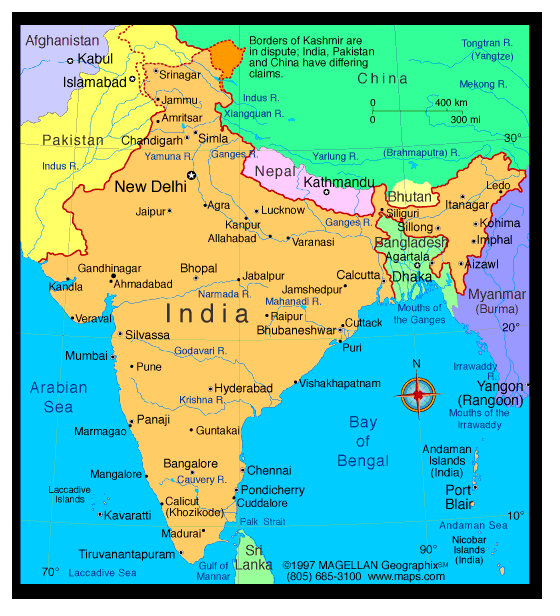|
Continuing: A Brief History of India |
|
The Bronze Age:
The Bronze Age in the Indian subcontinent dates back to around 3300 BCE with the early Indus Valley Civilization. Historically part of ancient India, it is one of the world's earliest, urban civilizations, along with Mesopotamia and Ancient Egypt. Inhabitants of this era developed new techniques in metallurgy and handicraft and produced copper, bronze, lead and tin.
The Vedic Period is distinguished by the Indo-Aryan culture which was associated with the texts of Vedas, sacred to Hindus, and that were orally composed in Vedic Sanskrit. The Vedas are some of the oldest extant texts, next to those in Egypt and Mesopotamia. The Vedic era in the subcontinent lasted from about 1500-500 BCE, laying down the foundation of Hinduism and other cultural dimensions of early Indian society. The Aryans laid down Vedic civilization all over North India, particularly in the Gangetic Plain.
Mahajanapadas:
This period saw the second major rise in urbanization in India after the Indus valley Civilization. The word "maha" means great and the word "janapada" means foothold of a tribe. In the later Vedic Age a number of small kingdoms or city states had mushroomed across the subcontinent and also find mention in early Buddhist and Jain literature as far back as 1000 BCE. By 500 BCE, sixteen "republics" or Mahajanapadas has been established, namely; Kasi, Kosala, Anga, Magadha, Vajji (or Vriji),Malla, Chedi, Vatsa (or Vamsa), Kuru, Panchala, Matsya, Surasena, Assaka, Avanti,Gandhara, and Kamboja.
Persian and Greek Conquests:
Much of the Northwest subcontinent (currently Afghanistan and Pakistan) came under the rule of the Persian Achaemenid Empire in C. 520 BCE under the rule of Darius the Great and remained so for two centuries. In 326 BCE, Alexander the Great conquered Asia Minor and the Achaemenid Empire, when he reached the Northwest frontier of the Indian subcontinent he defeated King Porus and conquered most of Punjab.
Maurya Empire - 322-185 BCE:
The Maurya Empire, ruled by the Mauryan Dynasty from 322-185 BCE was a geographically extensive and mighty political and military empire in ancient India, established in the subcontinent by Chandragupta Maurya in Magadha (present day Bihar) and was it further thrived under Ashoka the Great.
Maurya Empire - 1562:
In 1526, Babur, a descendant of Timur and Gengis Kahn from Fergana Valler (present day Uzbekistan) swept across the Khyber Pass and established the Mughal Empire which covered modern day Afghanistan, Pakistan, India and Bangladesh. The Mughal dynasty ruled most of the Indian subcontinent till 1600; after which it went into decline after 1707 and was finally defeated during India's first war of Independence in 1857.
Colonial Era:
From the 16th century, European powers such as Portugal, Netherlands, France and the United Kingdom established trading posts in India. Later, they took advantage of internal conflicts and established colonies in the country.
The British Rule:
The British Rule in India began with the coming of the British East India Company in 1600 and continued till Indian independence from British rule in 1947.
The Indian Independence Movement and Mahatma Gandhi:
In the 20th century Mahatma Gandhi led millions of people in a national campaign of non-violent civil disobedience to contain independence from the British.
Independence and Partition:
Religious tension between the Hindus and Muslims had been brewing over the years, especially in provinces like Punjab and West Bengal. The Muslims were a minority and they did not feel secure in the prospect of an exclusively Hindu government and hence made them wary of independence. All through this Mahatama Gandhi called for unity among the two religious groups. The British, whose economy had been weakened after World War 2, decided to leave India and participated in the formation of an interim government. The British Indian territories gained independence in 1947, after being partitioned into the Union of India and the Dominion of Pakistan.

